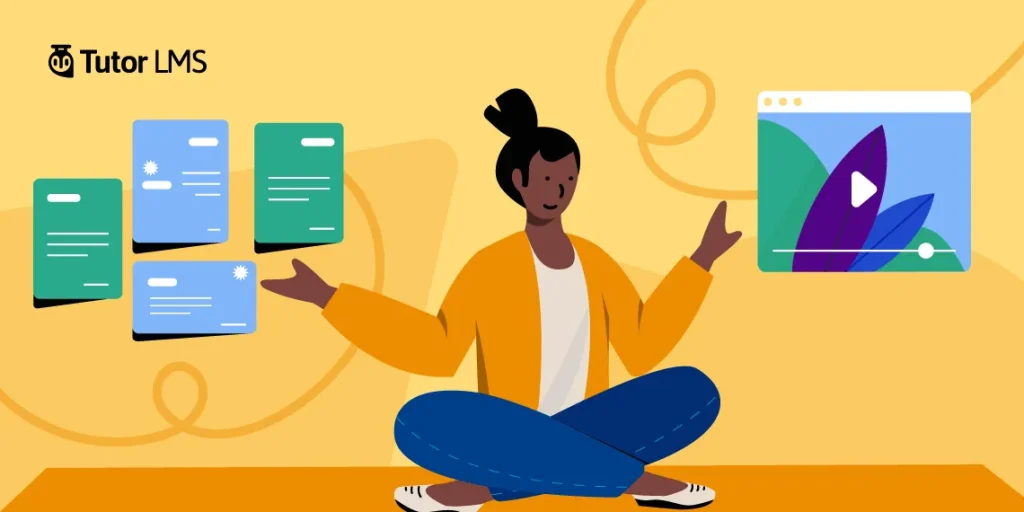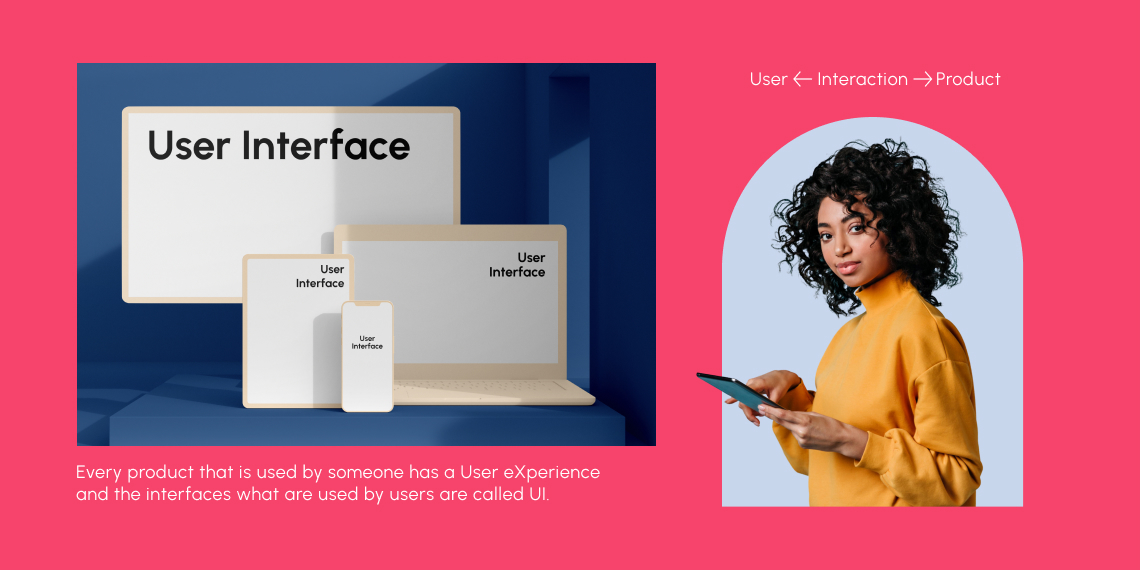“Failure is simply the opportunity to begin again, this time more intelligently.” – Henry Ford.
We’ve all been there. We started our eLearning platform with great excitement, researched well, implemented everything properly, and still failed in the end. But, why does a platform with such great potential end up as a failure?
Well, we are here today to find out those reasons along with the most appropriate solution for that.
When is an eLearning Platform Considered a Failure?
Failure is a tricky term in the eLearning industry. You can’t level a platform as a failure just because it doesn’t get enough students or fails to engage with the current students or something like that. In this section, we’ll talk about some specific indicators that an eLearning platform may be failing such as:
- Poor retention rates: If students are not completing courses or dropping out early, it may be a sign that the platform is not engaging or challenging enough. Try to implement different types of interactive educational lectures, videos, relevant quizzes, gamification, etc, to solve this problem.
- Lower student enrollment rate: If you get a lower student enrollment rate, it may be a sign that it is not meeting their needs or addressing their concerns. It may happen because your eLearning platform isn’t attractive enough or the enrollment process is complicated.
- Communication gap: Lack of communication transparency between the enrolled students and trainers might discourage future students from enrolling in your platform.
- Lack of effectiveness: If the platform is not helping students achieve their learning goals or improve their skills and knowledge effectively enough, they might lose interest in attending classes or exams. Thus your eLearning platform might become a failure.
- Bad rating from the student: If the students report that they are not satisfied with the platform or the learning experience, it may be a sign that the platform is not meeting their expectations. These bad reports might sink your platform for good.
Overall, there multiple might be multiple reasons behind a failed eLearning project. But these are the most common ones among those. If you notice these indicators on your eLearning platform, consider solving those ASAP.
Reasons Why eLearning Platforms Fail & What are the Solutions?
A survey by the Project Management Institute reported that 12% of projects failed only in the past year. So, even if one of your eLearning projects fails, there’s nothing to worry about. Instead, you should find out the problems and solve those accordingly. Here we have listed some common reasons why eLearning platforms fail and what are the solution for that. Let’s find those out together.
Reason #1: Targeting the wrong audience
Targeting the wrong audience is the most common and deadliest mistake made by eLearning platform owners. Promoting your platform among the wrong people will be nothing but a complete waste of your time and resources. Besides, you may also experience lower course sales, a negative brand reputation, decreased student loyalty, etc to your eLearning platform.
The solution: The only solution to this problem is reaching out to the most relevant customers. Targeting the right audience can help you build a more loyal customer base, as you are reaching people who are more likely to be interested in what you have to offer. However, there
Reason #2: Lack of research before choosing an LMS platform

It is important to do thorough research before choosing a learning management system (LMS) platform. Failing to do proper research before choosing an LMS can lead to problems later. For example, difficulties with the implementation, a lack of features that are necessary for your needs, user-friendliness, etc. That’s why it is important to carefully evaluate the different options available and choose an LMS that meets your needs and budget.
The solution: There is only one way to solve this problem – research the available LMS tools. Right now, there are multiple tools for creating an eLearning website, even without any technical skills. For example, you may use Tutor LMS to build a robust, well-structured, and user-friendly eLearning platform. It comes with lots of essential features like
- Unlimited course creation
- Advanced quiz creator
- Frontend course builder
- Student & instructor dashboards
- Automated quiz results
- WP Cron customization
- Earning management, etc.
By the way, all of these features aren’t available in the free version. Even though you can create a full-fledged eLearning platform with the free version, you might need to purchase the premium version to get all of those Tutor LMS features. You may check the Tutor LMS free vs pro comparison page to know more about these features.
Reason #3: Limited knowledge about the LMS features
Let’s say you are using a well-featured LMS platform like Tutor LMS. But there’s still a huge possibility of being a failure. Why? Because you might don’t have enough knowledge about your selected LMS tool.
The solution: After choosing your LMS tool, spend some time exploring the features. Thus you can not only understand the features well but also implement those if needed. So, having a feature-rich LMS tool isn’t the solution, you must learn to implement those features too.
Reason #4: Using incompatible or nulled themes/plugins
Few eLearning platform owners are often tempted to use nulled themes or plugins in order to save some bucks. Actually, there’s nothing wrong with trying to save some money while developing your eLearning website. But, don’t try to cut too many corners to do so. Because, it may lead to lots of deadly mistakes like getting no future updates, the possibility of malicious code in the plugin, etc. In the worst-case scenario, your website might get hacked.
The solution: The only solution is avoiding nulled plugins while developing your WordPress websites. Always use plugins from the official developer and keep your themes and plugins updated as well.
Reason #5: Offering mediocre online courses
Besides solving technical problems, you must stop offering mediocre courses too. It’s important to focus on delivering high-quality content, engaging students through interactive activities and multimedia, and continuously improving the course based on student feedback.
However, offering top-notch courses with advanced curriculums isn’t an easy task. If you don’t have enough time to manage those courses, have multiple instructors for your website and keep teaching your students. Whatever you do, make sure that the students are getting the best result from your eLearning website.
The solution: In order to solve this problem, hire professional instructors and make sure students are getting proper education from your website. Here are a few steps you can take:
- Create a course outline and syllabus that clearly defines your objectives, topics, and assessments.
- Use a variety of teaching methods, such as videos, lectures, readings, and interactive activities, to keep students engaged.
- Incorporate multimedia, such as images, audio, and video, to make the course more visually appealing and interactive.
- Regularly review student feedback and make changes to the course as needed to improve its quality.
- Encourage student participation through discussion forums, group work, and other collaborative activities.
- Stay up-to-date on best practices in online teaching and learning, and continuously seek ways to improve your course.
By following these tips, you can create a high-quality online course that engages and educates your students.
Reason #6: Failing to keep the learners engaged or motivated

Failing to keep learners engaged or motivated can be a major challenge in online learning. When students are not engaged or motivated, they may struggle to complete assignments, retain information, and achieve their learning goals. This can lead to poor performance, low grades, and high dropout rates.
The solution: To prevent this from happening, it’s important to create an engaging and interactive learning environment that keeps students motivated and interested in the material. This can include using a variety of teaching methods, incorporating multimedia, encouraging student participation and collaboration, and providing ongoing feedback and support.
It’s also important to set clear expectations and goals for the course and to provide regular feedback and support to help students stay on track. By keeping learners engaged and motivated, you can increase their chances of success in your online course.
Reason #7: Confusing website navigation
Website navigation refers to the process of surfing around a website and accessing the various pages and content it contains. A confusing navigation system can make it difficult for users to find the information they are looking for or to understand how to access different sections of your eLearning website.
This confusion may be caused by a variety of factors, such as poorly organized course content, unclear or misleading links, or a confusing web theme. To improve website navigation, it is important to design a clear and intuitive structure, use descriptive and clear link text, and provide clear and consistent navigation options throughout the site.
The solution: Fortunately, solving the website navigation isn’t a big deal. You can do it only by choosing an optimized and user-friendly theme for your eLearning website. If you are still confused about the user-friendliness, you may follow the steps below to solve this:
- Review the whole website structure
- Evaluate the layouts of every web page
- Ask a few students to use the beta version
- Make required changes based on their feedback
That’s how you can improve the navigation of your website and make it easier for users to find the information they need. If you don’t wanna go with this hassle, you can simply choose a theme from Themeum. All of these themes are optimized, responsive, clean-coded, SEO-friendly, and easier to navigate. Go check those out.
Reason #8: Your eLearning platform isn’t mobile-friendly
As many people rely on their mobile devices for accessing the internet and learning online, unresponsiveness can be a major inconvenience for the users. Besides, a lot of students rely on their smartphones or tablets to access their course contents from anywhere anytime. If your website isn’t responsive enough, you may end up losing a large portion of your students.
The solution: A mobile-friendly eLearning platform is important because it allows users to access and use the platform from anywhere, at any time, on any device. It can also improve the user experience, increase engagement, and retention rates. Furthermore, students are more likely to continue using the platform if it is easy and convenient for them to do so.
The best way to do so is redesigning your existing website. If you have enough technical knowledge for that, you may proceed by yourself. Otherwise, you should seek help from a professional developer. By the way, you can avoid all of these hassles by choosing a perfect LMS theme for your eLearning website. These themes are not only visually appealing but also SEO-friendly.
Reason #9: Offering no practical knowledge to the students
Offering no practical knowledge to students means that the educational material provided does not have any real-world applications or relevance. This can make it difficult for the students to understand the course material and see the value in learning it.
The solution: There are several ways to offer practical knowledge to the students:
- Arrange meetings or conferences with the SMEs
- Use real-world projects and examples
- Encourage real-life problem solving based learning
- Encourage students to read and analyze case studies
By using these strategies, you can help students develop practical knowledge and better understand how to apply their knowledge in the real world.
Reason #10: Typical UI/UX design mistakes

A typical UI/UX design mistake is ignoring usability principles. Usability refers to how easy it is for users to understand and use a product or service. When usability is ignored, the design may lead to a poor user experience. Some specific examples of ignoring usability principles include:
- Not providing clear instructions or guidance for tasks
- Lack of using sufficient white space or negative space
- Not providing a clear visual hierarchy or organization of course content
- Not using clear and descriptive labels for buttons or other interactive elements.
By paying attention to usability principles and testing the design with users, you can create a UX design that is effective and easy to use.
The solution: To solve the UX-related mistakes, you can follow the steps below:
- Use clear hierarchy
- Implement white spaces effectively
- Incorporate consistent design elements
- Implement usability principles like simplicity, consistency, and ease of use
- Test the design with potential students and keep improving based on the designs
By following these steps, you can solve typical UX mistakes and create an effective, user-friendly, and successful design.
Reason #11: Lack of follow-up support
Lack of support on an eLearning website can be a major problem for students, as they may not have access to the necessary resources or assistance to complete their coursework or understand the material. Some potential issues that can arise from a lack of support on an eLearning website include difficulty accessing or using the website, lack of clarification or course materials, difficulty contacting the instructor or getting help, etc.
The solution: The lack of support is directly involved with the student’s retention. To solve the lack of support on an eLearning website, you can take the following steps:
- Provide clear solutions to the students
- Create a help desk or support forum
- Offer multiple ways to contact the instructor
- Regularly check in with the students
- Consider offering one-on-one assistance if possible, etc.
By providing a range of support options, you can help ensure that students have the resources they need to succeed in their courses.
Conclusion
In conclusion, eLearning can fail for a variety of reasons, including a lack of engagement, poor course design, and inadequate support. To avoid these issues, it is important to design courses that are engaging, provide a clear structure and hierarchy, and offer a range of support options.
Follow the solutions and create a successful eLearning experience that meets the needs of your students and helps them achieve their learning goals.
Start Using Tutor LMS Today
Ready to take your online courses to new heights? Download Tutor LMS now and enjoy a journey of eLearning excellence.
